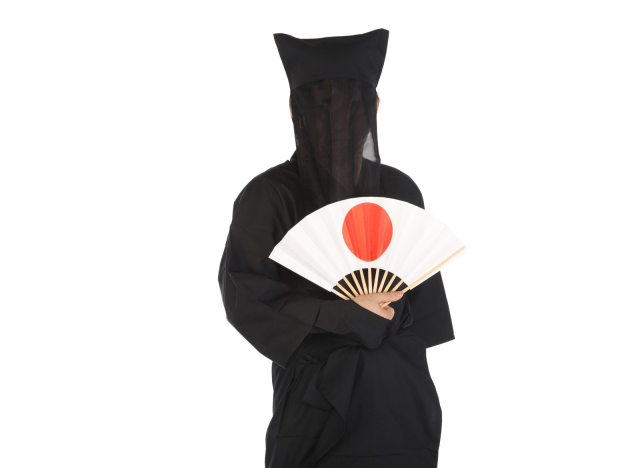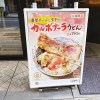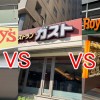
”This is Japan, you know?” he asks, but others want to show him the ways of the modern world.
Japanese Twitter user @J64682242 was recently riding a train in Tokyo, which is, of course, the capital of Japan. To @J64682242’s eyes, though, the carriage’s interior didn’t look sufficiently Japanese.
https://twitter.com/J64682242/status/1030247339527561216“Isn’t this signage strange? This is Japan, you know?” @J64682242 asked, pairing his question with a photo of the in-car diagram of the stations for the line, with their names written in Chinese on the top line and Korean on the bottom line.
In his Twitter profile, @J64682242 describes himself as neither left nor right-leaning politically. He also says that he’s been to more than 10 foreign countries, but “I’ve never seen another country that goes this far in displaying signs in languages other the country’s indigenous one and English.”
Despite @J64682242’s claimed experience as a world traveler, however, other Japanese Twitter users were quick to provide photographs showing that other countries also find space for more than their own language and English on their signage, several with Japanese text as part of the display. A few even chose to mockingly copy @J64682242’s syntax.
▼ “Isn’t this signage strange? This is Malaysia, you know?”
表記おかしくね?ここマレーシアだよな? pic.twitter.com/0g3EUIn1EH
— Mai Lonef (ロネフ舞衣)🇯🇵🇲🇾🏳️🌈 (@maichan8590) August 18, 2018
▼ “Isn’t this signage strange? This is Korea, you know?”
表記おかしくね?ここ韓国だよな? pic.twitter.com/UjIShqx4Pf
— 今までありがとうございました。 (@wwwwwww_m9) August 18, 2018
▼ “This is America, you know?”
https://twitter.com/avit4799/status/1031018638910910464Some even went so far as to express suspicion as to how truthful @J64682242’s claimed international experience is, such as the poster of this snapshot taken in Switzerland.
▼ “I’m curious as to what the breakdown is of the 10 countries he’s been to.”
10ヶ国の内訳が知りたい pic.twitter.com/HDQQyN5N8s
— ウサギ (@nekotausagi) August 19, 2018
And in contrast to @J64682242’s implied reasoning that aside from English the only thing that belongs on a sign is that particular country’s primary language, shots like this one from Miami show that even in nations where English is the dominant language, there’s still an understanding that it’s nice to include others as well.
マイアミ空港。米国内ですがスペイン語表記も充実。 pic.twitter.com/i9Wz4qwMeF
— Miguel Hirota (@mig76fk) August 19, 2018
▼ More cases of Japanese signage in Switzerland
スイスです。日本人観光客が多いところでは日本語表記があります。 pic.twitter.com/uobaMP4mSS
— ウサギ (@nekotausagi) August 19, 2018
なおスイス。 pic.twitter.com/nM93A7i2pv
— すけ (@suke_sdk) August 19, 2018
▼ Vancouver’s SkyTrain
https://twitter.com/s_ahhyo/status/1031055328912130049▼ The Paris subway
https://twitter.com/Yonge_Highway7/status/1030825182338985985It’s worth noting that several of the photos posted as rebuttals to @J64682242’s grumbling were taken at airports with international flights, or, in the case of the picture from Vancouver, public transportation that travelers might be using to get to such airports. @J64682242’s photo, though, looks to have been taken on the Yurikakome, a train which connects downtown Tokyo with the Tokyo Bay island of Odaiba. However, Odaiba is a major tourist attraction, thanks to its beautiful views of the city skyline, multiple shopping/entertainment centers, and full-scale Gundam anime giant robot statue. With Odaiba being an especially big draw for travelers from elsewhere in Asia, it’s not surprising that the Yurikakome would have Chinese and Korean signage, sort of how like Singapore has signs directing travelers to the Merlion Park with Japanese text, since it’s the city’s most popular landmark with Japanese tourists.
なるほど!自国の言語と英語以外の言語を表記しているシンガポールは異常な国ですね!日本の植民地なのでしょうか! pic.twitter.com/FWvffqciqB
— やまねこ丸𓂃💛💙 (@Yamanekoniz) August 19, 2018
And perhaps most importantly, several commenters were quick to point out that while @J64682242’s photo only shows the station diagram to the side of the door, the most prominent one on the Yurikamome is located above the portal, and is in Japanese.
With Japan welcoming an increasingly large number of foreign guests, @J64682242 may just have to get used to the fact that country is doing what it can to be more linguistically accommodating to the global community, even if the results are sometimes more hilarious than informative.
Source: Twitter/@J64682242 via Hachima Kiko
Top image: Pakutaso

 Japanese woman’s super sweet birthday surprise from husband comes all the way from Moominvalley
Japanese woman’s super sweet birthday surprise from husband comes all the way from Moominvalley Massive storm lights up Tokyo with thousands of lightning strikes 【Pics & Videos】
Massive storm lights up Tokyo with thousands of lightning strikes 【Pics & Videos】 Netizen’s dare lands him in a tough spot after Japan’s unexpected soccer victory over Colombia
Netizen’s dare lands him in a tough spot after Japan’s unexpected soccer victory over Colombia Japanese Twitter users make Osaka Metro’s English translation mistakes into running joke, memes
Japanese Twitter users make Osaka Metro’s English translation mistakes into running joke, memes Gang of “yakuza deer” regularly takes over Japanese restaurant’s street-side entrance【Photos】
Gang of “yakuza deer” regularly takes over Japanese restaurant’s street-side entrance【Photos】 Foreigner’s request for help in Tokyo makes us sad for the state of society
Foreigner’s request for help in Tokyo makes us sad for the state of society Japanese city loses residents’ personal data, which was on paper being transported on a windy day
Japanese city loses residents’ personal data, which was on paper being transported on a windy day Ghibli Park now selling “Grilled Frogs” from food cart in Valley of Witches
Ghibli Park now selling “Grilled Frogs” from food cart in Valley of Witches Akihabara pop-up shop sells goods made by Japanese prison inmates
Akihabara pop-up shop sells goods made by Japanese prison inmates Historical figures get manga makeovers from artists of Spy x Family, My Hero Academia and more
Historical figures get manga makeovers from artists of Spy x Family, My Hero Academia and more Beautiful Ghibli sealing wax kits let you create accessories and elegant letter decorations【Pics】
Beautiful Ghibli sealing wax kits let you create accessories and elegant letter decorations【Pics】 Japanese ramen restaurants under pressure from new yen banknotes
Japanese ramen restaurants under pressure from new yen banknotes Suntory x Super Mario collaboration creates a clever way to transform into Mario【Videos】
Suntory x Super Mario collaboration creates a clever way to transform into Mario【Videos】 Limited-edition Carbonara Udon will anger noodle purists and pasta lovers 【Taste test】
Limited-edition Carbonara Udon will anger noodle purists and pasta lovers 【Taste test】 We eat at three Japanese family restaurants to find the one with the best-value breakfast
We eat at three Japanese family restaurants to find the one with the best-value breakfast McDonald’s new Happy Meals offer up cute and practical Sanrio lifestyle goods
McDonald’s new Happy Meals offer up cute and practical Sanrio lifestyle goods French Fries Bread in Tokyo’s Shibuya becomes a hit on social media
French Fries Bread in Tokyo’s Shibuya becomes a hit on social media Studio Ghibli releases new action figures featuring Nausicaä of the Valley of the Wind characters
Studio Ghibli releases new action figures featuring Nausicaä of the Valley of the Wind characters New private rooms on Tokaido Shinkansen change the way we travel from Tokyo to Kyoto
New private rooms on Tokaido Shinkansen change the way we travel from Tokyo to Kyoto Red light district sushi restaurant in Tokyo shows us just how wrong we were about it
Red light district sushi restaurant in Tokyo shows us just how wrong we were about it Tokyo Tsukiji fish market site to be redeveloped with 50,000-seat stadium, hotel, shopping center
Tokyo Tsukiji fish market site to be redeveloped with 50,000-seat stadium, hotel, shopping center All-you-can-drink Starbucks and amazing views part of Tokyo’s new 170 meter-high sky lounge
All-you-can-drink Starbucks and amazing views part of Tokyo’s new 170 meter-high sky lounge Studio Ghibli releases Kiki’s Delivery Service chocolate cake pouches in Japan
Studio Ghibli releases Kiki’s Delivery Service chocolate cake pouches in Japan New definition of “Japanese whiskey” goes into effect to prevent fakes from fooling overseas buyers
New definition of “Japanese whiskey” goes into effect to prevent fakes from fooling overseas buyers Our Japanese reporter visits Costco in the U.S., finds super American and very Japanese things
Our Japanese reporter visits Costco in the U.S., finds super American and very Japanese things Studio Ghibli unveils Mother’s Day gift set that captures the love in My Neighbour Totoro
Studio Ghibli unveils Mother’s Day gift set that captures the love in My Neighbour Totoro More foreign tourists than ever before in history visited Japan last month
More foreign tourists than ever before in history visited Japan last month New Pokémon cakes let you eat your way through Pikachu and all the Eevee evolutions
New Pokémon cakes let you eat your way through Pikachu and all the Eevee evolutions Sales of Japan’s most convenient train ticket/shopping payment cards suspended indefinitely
Sales of Japan’s most convenient train ticket/shopping payment cards suspended indefinitely Sold-out Studio Ghibli desktop humidifiers are back so Totoro can help you through the dry season
Sold-out Studio Ghibli desktop humidifiers are back so Totoro can help you through the dry season Japanese government to make first change to romanization spelling rules since the 1950s
Japanese government to make first change to romanization spelling rules since the 1950s Ghibli founders Toshio Suzuki and Hayao Miyazaki contribute to Japanese whisky Totoro label design
Ghibli founders Toshio Suzuki and Hayao Miyazaki contribute to Japanese whisky Totoro label design Doraemon found buried at sea as scene from 1993 anime becomes real life【Photos】
Doraemon found buried at sea as scene from 1993 anime becomes real life【Photos】 Tokyo’s most famous Starbucks is closed
Tokyo’s most famous Starbucks is closed One Piece characters’ nationalities revealed, but fans have mixed opinions
One Piece characters’ nationalities revealed, but fans have mixed opinions We asked a Uniqlo employee what four things we should buy and their suggestions didn’t disappoint
We asked a Uniqlo employee what four things we should buy and their suggestions didn’t disappoint Princesses, fruits, and blacksmiths: Study reveals the 30 most unusual family names in Japan
Princesses, fruits, and blacksmiths: Study reveals the 30 most unusual family names in Japan If this adorable Shiba dog can learn to speak a word in Japanese (and he has), so can you【Video】
If this adorable Shiba dog can learn to speak a word in Japanese (and he has), so can you【Video】 Station and Lawson convenience store near Tokyo Big Sight gear up for a blazing Summer Comiket
Station and Lawson convenience store near Tokyo Big Sight gear up for a blazing Summer Comiket Typhoon Trami batters Japan, hits close to Tokyo with fierce winds 【Photos & Videos】
Typhoon Trami batters Japan, hits close to Tokyo with fierce winds 【Photos & Videos】 Hand-drawn store-front signs, featuring everything from food to anime, are wowing passersby
Hand-drawn store-front signs, featuring everything from food to anime, are wowing passersby Awesomely adorable Pokémon subway trains start service in downtown Tokyo【Photos】
Awesomely adorable Pokémon subway trains start service in downtown Tokyo【Photos】 Expert paper crafter fashions more wondrous creations from popular Japanese snack packaging
Expert paper crafter fashions more wondrous creations from popular Japanese snack packaging Why is Japan such an unpopular tourist destination?
Why is Japan such an unpopular tourist destination? Japanese photographer captures the beauty of Tokyo Station in breathtaking image
Japanese photographer captures the beauty of Tokyo Station in breathtaking image Now even countries that aren’t playing against Japan are cleaning their stadiums at the World Cup
Now even countries that aren’t playing against Japan are cleaning their stadiums at the World Cup Shiba Inu in the snow: Japanese dogs melt hearts with their love for the cold【Pics & Video】
Shiba Inu in the snow: Japanese dogs melt hearts with their love for the cold【Pics & Video】 Mysterious ghostly baby footprint randomly appears in shopping malls, creeps out netizens
Mysterious ghostly baby footprint randomly appears in shopping malls, creeps out netizens Korean pop star wears T-shirt commemorating Hiroshima atomic bombing, draws criticism in Japan
Korean pop star wears T-shirt commemorating Hiroshima atomic bombing, draws criticism in Japan
Leave a Reply